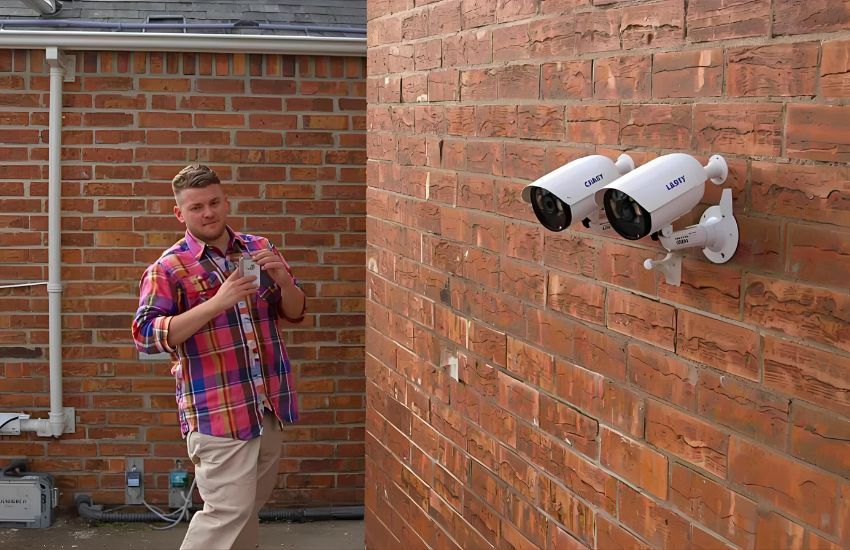Finding a replacement security camera compatible with your existing system can be a critical step in maintaining reliable coverage and uninterrupted surveillance. When upgrading or repairing your camera system, compatibility is essential to ensure seamless connection with your current NVR or other recording devices. Selecting the wrong camera—whether wired or wireless—can cause issues with image quality, such as losing HD or 1080p resolution, or even disrupt your entire security setup.
To find replacement security cameras compatible with your existing system, first identify your current system type (analog, HD, IP). Check the camera’s connection type (BNC, Ethernet) and resolution compatibility. Match the replacement camera’s specifications, such as power source and video format, to ensure seamless integration and reliable coverage without system upgrades.
This blog will guide you through essential considerations when choosing replacement security cameras, including compatibility checks, technical specifications, and tips for both wired and wireless systems. By the end, you’ll be equipped to select the right camera that integrates perfectly with your current setup, ensuring your home or business security remains robust and effective.
Understanding Camera Compatibility: Matching Security Camera Types, Formats, and Cables with Your Current NVR System

Identifying Your Security Camera System and Recorder Type
To find a compatible replacement camera, you must first understand the type of security camera system you currently use. Most systems rely on either a DVR or an NVR recorder, each supporting different camera formats. Traditional analog CCTV cameras connect via coax cables to DVRs, while IP cameras communicate over a network and are compatible with NVR systems. Knowing whether your setup uses DVR or NVR technology will guide you in selecting cameras that match your recorder’s format and connection type.
Choosing the Right Camera Format and Resolution
Your existing system’s format is crucial for compatibility. Analog cameras typically use formats like AHD, whereas IP cameras follow digital protocols. Upgrading from an analog system to IP cameras often requires a change in the recorder or hybrid systems. Additionally, consider the resolution your system supports—whether 720p, 1080p, 2K, or 4K. Higher resolution cameras offer better image clarity and coverage but must be compatible with your NVR system’s recording capabilities to avoid issues with recording and monitoring.
Matching Cables and Connection Types
The type of cable used in your surveillance system plays a vital role in compatibility. Analog CCTV cameras often use coax or BNC cables, while IP cameras commonly require Cat6 Ethernet cables supporting PoE (Power over Ethernet). When replacing cameras, you must ensure your cables support the camera’s data and power needs. For outdoor cameras with advanced features like night vision, spotlight, or color night vision, using the correct cable type is essential for reliable coverage and alert functionality.
Ensuring Seamless Setup and Coverage
When installing a replacement camera, consider both indoor and outdoor environments. Cameras offer specialized features such as motion detection, sirens, and spotlight illumination, which enhance security system performance. Ensuring your new camera integrates smoothly with your existing NVR system will maintain consistent recording and effective monitoring. By carefully matching camera format, resolution, cable type, and recorder compatibility, you can successfully upgrade or maintain your security system’s coverage without interruption.
See more about…AI Security Camera System
Conclusion
In conclusion, whether you are upgrading an existing analog CCTV setup or expanding your NVR system, understanding compatibility is key to maintaining effective home surveillance. Newer cameras are designed to support both wired and wireless connections, incorporating advanced features like motion detection and improved resolution options such as 4MP and 5MP. When selecting replacement cameras, consider the protocol and ports your network video recorder supports, ensuring seamless integration with your current system. While analog CCTV systems rely on coaxial cables and traditional channels, IP-based NVR systems offer greater flexibility and scalability. By carefully matching camera specifications, connection types, and compatibility with your existing analog or IP system, you can optimize your security coverage and protect your property with confidence.
See more about…Remotely Disarm Your Security Camera System
Frequently Asked Questions (How to Find Replacement Security Cameras Compatible with Your Existing System for Reliable Coverage)
How do I know if my camera is compatible with DVR?
To know if your camera is compatible with a DVR, check the video format supported, such as analog (CCTV), HD-CVI, HD-TVI, AHD, or IP. Ensure both the camera and DVR share the same format and resolution. Also, verify the number of channels, power supply type, and connector compatibility (usually BNC for analog systems).
Can you replace a security camera?
Yes, you can replace a security camera if it becomes faulty, outdated, or incompatible with your system. Ensure the new camera matches your DVR/NVR or wireless setup, resolution, and power requirements. Disconnect the old camera carefully, mount the new one, and connect cables or pair it wirelessly. Test the video feed to confirm proper installation.
What is the most reliable security camera?
The most reliable security camera is one that offers consistent performance, high-resolution video, night vision, weather resistance, and strong connectivity. Brands like Arlo, Hikvision, Ring, and Reolink are highly trusted for reliability. Features such as motion detection, cloud or local storage, and mobile app integration ensure dependable monitoring and long-term security in different environments.
Can you use coaxial cable for security cameras?
Yes, coaxial cable can be used for security cameras, especially in traditional analog CCTV systems. The most common type is RG59, which supports short to medium distances, while RG6 handles longer runs with less signal loss. Coaxial cables often come with power wires (Siamese cable), allowing both video transmission and camera power in a single line.
